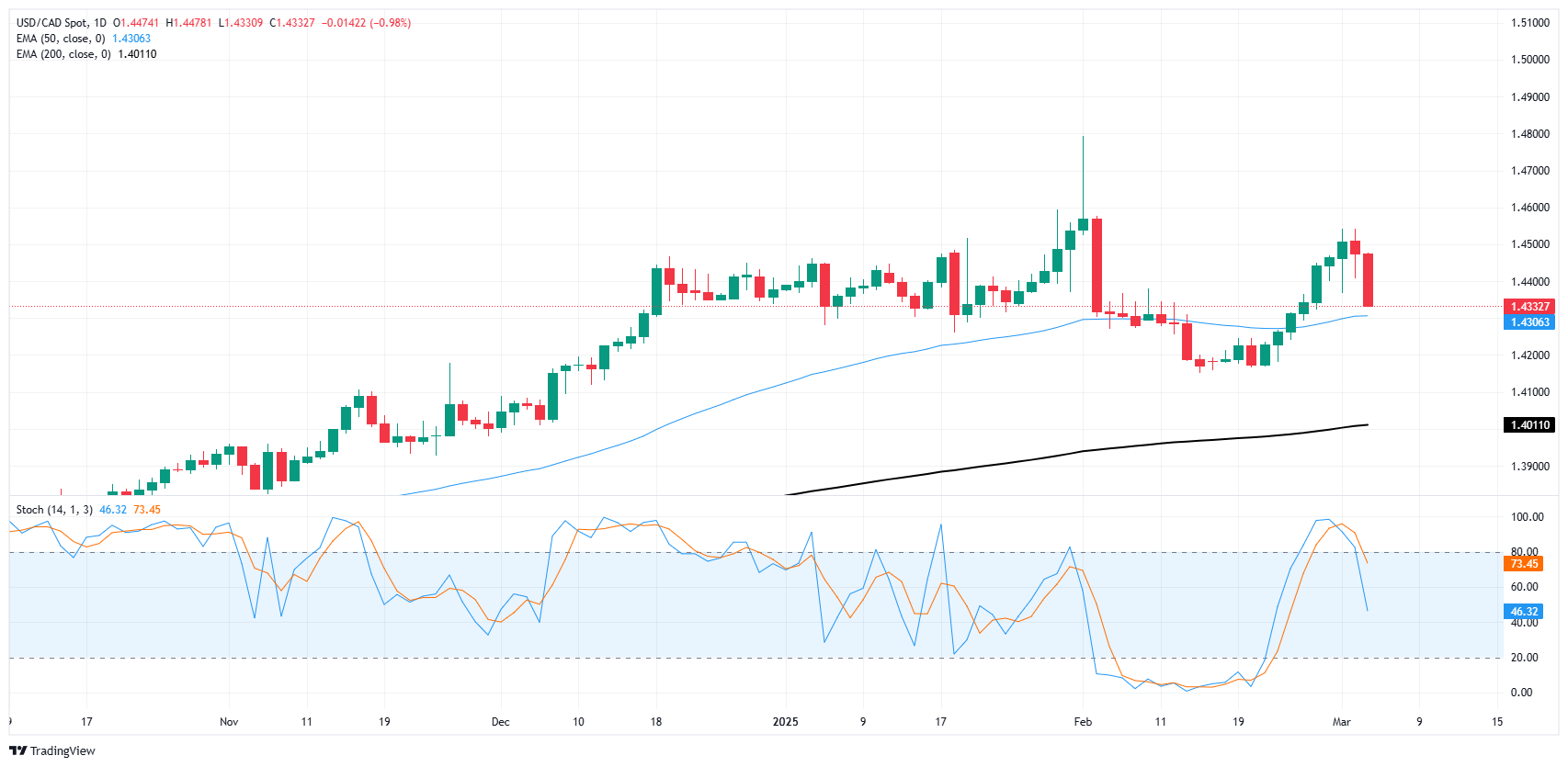提供最佳价差和条件
 关于平台
关于平台
The Canadian Dollar rallied hard on Wednesday, recovering almost full percent against the US Dollar. The day’s Loonie recovery has pushed USD/CAD lower, forcing bids back into the 50-day Exponential Moving Average (EMA) near the 1.4300 handle.
It took less than 48 hours, but US President Donald Trump is already exploring avenues to provide concessions or extensions for key industries that face ruin at the hands of President Trump’s sweeping tariff agenda. The White House has issued a 30-day exemption for the US automotive industry following the implementation of Donald Trump’s bespoke tariff strategy that imposed a 25% tariff on all goods imported from Canada and Mexico.
The Canadian Dollar’s Wednesday rebound has dragged the USD/CAD chart back down into familiar territory, for better or for worse. The prevailing trend is a slow-motion sideways grind, with the Loonie continuously testing multi-year lows against the Greenback.
USD/CAD is inching back into the 50-day EMA at the 1.4300 handle on daily candlesticks, implying the pair could once again run out of gas. However, technical oscillators are showing that Loonie bulls still have some room to run and try to drag USD-based pairs even lower.

The key factors driving the Canadian Dollar (CAD) are the level of interest rates set by the Bank of Canada (BoC), the price of Oil, Canada’s largest export, the health of its economy, inflation and the Trade Balance, which is the difference between the value of Canada’s exports versus its imports. Other factors include market sentiment – whether investors are taking on more risky assets (risk-on) or seeking safe-havens (risk-off) – with risk-on being CAD-positive. As its largest trading partner, the health of the US economy is also a key factor influencing the Canadian Dollar.
The Bank of Canada (BoC) has a significant influence on the Canadian Dollar by setting the level of interest rates that banks can lend to one another. This influences the level of interest rates for everyone. The main goal of the BoC is to maintain inflation at 1-3% by adjusting interest rates up or down. Relatively higher interest rates tend to be positive for the CAD. The Bank of Canada can also use quantitative easing and tightening to influence credit conditions, with the former CAD-negative and the latter CAD-positive.
The price of Oil is a key factor impacting the value of the Canadian Dollar. Petroleum is Canada’s biggest export, so Oil price tends to have an immediate impact on the CAD value. Generally, if Oil price rises CAD also goes up, as aggregate demand for the currency increases. The opposite is the case if the price of Oil falls. Higher Oil prices also tend to result in a greater likelihood of a positive Trade Balance, which is also supportive of the CAD.
While inflation had always traditionally been thought of as a negative factor for a currency since it lowers the value of money, the opposite has actually been the case in modern times with the relaxation of cross-border capital controls. Higher inflation tends to lead central banks to put up interest rates which attracts more capital inflows from global investors seeking a lucrative place to keep their money. This increases demand for the local currency, which in Canada’s case is the Canadian Dollar.
Macroeconomic data releases gauge the health of the economy and can have an impact on the Canadian Dollar. Indicators such as GDP, Manufacturing and Services PMIs, employment, and consumer sentiment surveys can all influence the direction of the CAD. A strong economy is good for the Canadian Dollar. Not only does it attract more foreign investment but it may encourage the Bank of Canada to put up interest rates, leading to a stronger currency. If economic data is weak, however, the CAD is likely to fall.